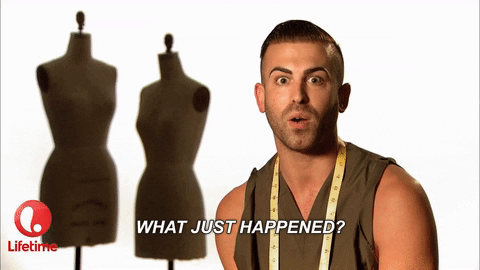There is no better feeling than getting an email stating that the proposal you worked so hard on for a conference has been accepted.
Knowing that the topic or the knowledge you want to share has been well received by a committee can mean a great deal, especially if you are passionate about the topic that has been put forth.
For many student affairs professionals, giving presentations to colleagues or students might be essential to their role. But for others, presenting at a conference might be a bit more to contend with, especially if you are only used to a presenting to a few people in a small room.
There are so many dynamics to consider when thinking about giving a presentation at a conference.
While the content of your presentation will always be most important, there are other dynamics like emotional impact and storytelling that can add or take away from your presentation.
One of the most vital things that people often overlook before putting together a presentation is how important it is to be genuine to the topic, but also how to stay present and approachable to the room throughout your presentation.
If this year is your first time presenting at a large conference, here are some tips on how you can make a sound impression on the room while providing a topic that will make a lasting impression.
1. Before you begin
One thing that presenters often forget to do before starting a presentation is get to know those who are in the room. Asking folks to identify with a department or leadership level will often help create a sense of community in relation to how you speak to the room. You don’t need to ask everyone to introduce themselves individually (in a large room, that could take your entire presentation time), but you can do a hand-raise or use a tool like Poll Everywhere.
Keep in mind of the choice of words you use to greet the room and how you might address folks as they ask questions. Rather than assuming their gender and not asking their name, thank them for their question, and ask their name and what pronouns they use.
This is a great way to leave a lasting impression and demonstrate that you value someone’s identity.
2. Confidence is key
Good presentations are memorable, but the ones that will always stand out are the bad ones.

Keep in mind that a good presentation begins with a great amount of research on the topic. You might want to reach out to others who have presented on the topic in the past or might have a knack for the topic that you might be presenting.
There is nothing worse than a presenter who is not confident in the topics they are speaking about, so making sure that you know everything in and out of the topic will help those in the room feel like they made the right choice in coming to your presentation.
In being memorable, look for ways in the presentation to add humor or thought-provoking content. Sometimes, telling a funny or personal story – or even adding a funny gif to a slide — can make you stand out in a season of session.
If all else fails, add a photo of cats because they’re cute. Everyone loves cats.

3. Know your stuff
The best presentations are those where the audience doesn’t have to search to make sense of the information being presented.
Remind yourself that not everyone processes information at the same speed. Check in with those who are in the room to make sure that are keeping up with the information that is being provided — especially if folks are quieter. To help keep your pace, time yourself prior to the presentation as practice, and keep a timer on your phone during the presentation.
This also connects to the idea of how much information is presented in each of your slides and how much time you are giving the crowd to process the information. If there is to much information in your presentation, attendees are more focused on trying to catch the information that you are throwing at them rather than making a connecting with the information you share.
Take a moment to ask yourself, “Am I the source of the information or is my presentation the source of the information?” The answer should always be you. Your presentation is a supplement.
Information overload can and will overpower the message you have in your presentation and might leave an attendee forgetting who you are and what you are there to share.
By simplifying your presentation (adding graphics like memes, gifs or even personal photos), you make the presentation more about the connection to your learning outcomes rather than simply what is on your slides. Keep in mind that the best presentations are those that provide valid and pertinent information, with research or data to back it up, so find your balance between fun and informative.
One of the best things you can do for your audience is fact-check. Make sure that whatever information you are including in your presentation has research around it. Some people appreciate opinion, but most will appreciate honest data presented in an honest way.
4. Be genuine
Every good presentation should include some sort of story or topic that relates to you as the presenter.
Unlike data, it’s our stories that often speak to the heart of the room and provide great opportunities for dialogue both inside and outside of the space. Using an element of your personal story can often help you make points that may draw the emotion out of your participants, something that many go to spaces looking for.
Reminding yourself that great presentations, regardless of the topic, are stories can help you center the learning journey that your participants are on. Speak to the core of a person’s emotional intelligence.
5. Mind your energy
Content makes for 50% of any presentation. The other 50%? That’s the energy that you put behind it all.
Be mindful of the energy that you put forth, because that will always be the energy people will take away. While people come to presentations looking for information, the information will often be better received if they feel that the presenter cared about their growth.
Think about it from the perspective of taking a class you really liked. Most of the time, it is usually the educator who makes the material enjoyable to learn. Think about presenting through the same lens. The more enjoyable and genuine you are about the topic, the more someone will take away from the presentation.
6. Embrace your nerves
Finally, the best thing to keep in mind about your presentation is to listen to the nerves that you might have before you present.
If you were to ask any great speaker or presenter why nerves are good for you, they’ll often tell you that it’s because nerves help you put your best foot forward. Nerves tell you that you want to do a great job in the space and that is something that should be embraced.
The moment that you begin to ignore your nerves and assume that you are the best presenter on the topic you are putting forth is the moment when folks will choose to stop listening to the message that you are trying to convey.
The most important thing to remember before your presentation is to check in with yourself about the things you need to give a quality presentation.

Remind yourself that things are going to happen during the presentation and that no one expects you or the presentation to be perfect. Often, the presentations where you embrace the hiccups are the ones we learn the most from.
Always acknowledge that you are simply there to share knowledge and that this is a learning space for everyone.
With these tips in your pocket, you’ll be on your way to a five-star presentation.
What are your favorite presentation tips? Let us know on Twitter @themoderncampus and @DoctorJonPaul!





